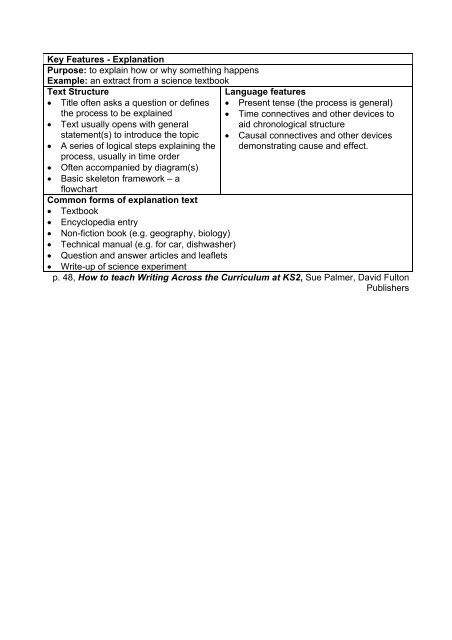Torbay Literacy Folio 10E Explanatory Texts Assessment Criteria ...
Torbay Literacy Folio 10E Explanatory Texts Assessment Criteria ...
Torbay Literacy Folio 10E Explanatory Texts Assessment Criteria ...
You also want an ePaper? Increase the reach of your titles
YUMPU automatically turns print PDFs into web optimized ePapers that Google loves.
Key Features - Explanation<br />
Purpose: to explain how or why something happens<br />
Example: an extract from a science textbook<br />
Text Structure<br />
• Title often asks a question or defines<br />
the process to be explained<br />
• Text usually opens with general<br />
statement(s) to introduce the topic<br />
• A series of logical steps explaining the<br />
process, usually in time order<br />
• Often accompanied by diagram(s)<br />
• Basic skeleton framework – a<br />
flowchart<br />
Language features<br />
• Present tense (the process is general)<br />
• Time connectives and other devices to<br />
aid chronological structure<br />
• Causal connectives and other devices<br />
demonstrating cause and effect.<br />
Common forms of explanation text<br />
• Textbook<br />
• Encyclopedia entry<br />
• Non-fiction book (e.g. geography, biology)<br />
• Technical manual (e.g. for car, dishwasher)<br />
• Question and answer articles and leaflets<br />
• Write-up of science experiment<br />
p. 48, How to teach Writing Across the Curriculum at KS2, Sue Palmer, David Fulton<br />
Publishers


